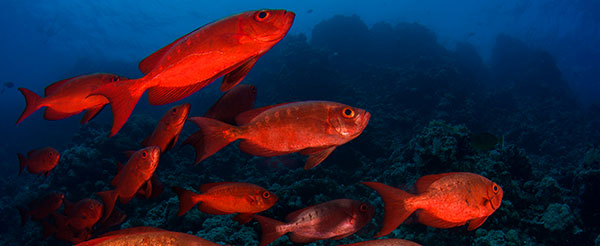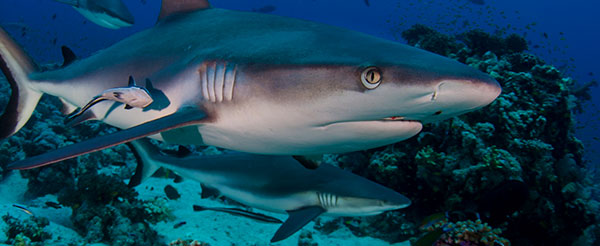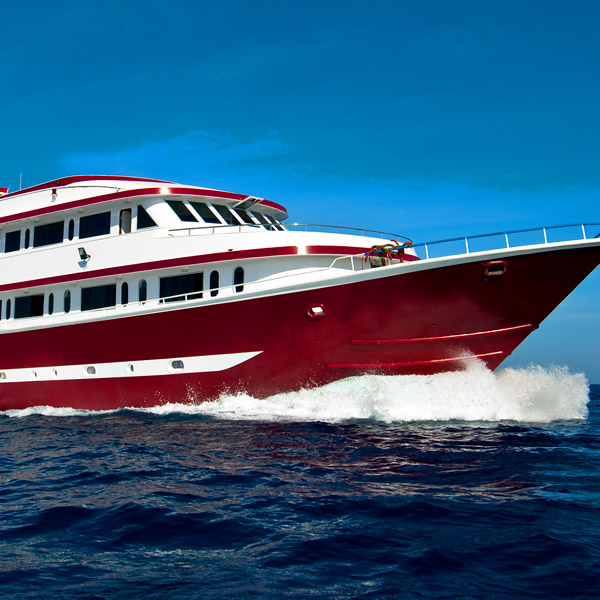General questions about diving in Sudan
When is the best time to dive in Sudan?
The best time for diving in Sudan is between February and June. This is when the sea is the most alive and marine life is the richest. The fall months (September-November) are also favoured by divers, especially October when it is manta season in Sudan near Mesharifa reef.
What type of diving suit is recommended?
Most divers can do with a shorty in May and June. It is usually enough to wear a 3 mm or 5 mm long suit between February and April and in the fall.
Is equipment available to rent?
It is highly recommended for every diver to bring his/her own full gear but it is possible to rent equipment in limited numbers. This request should be sent to us at least one week prior to departure. Twelve-litre compressed-air tanks and weights are provided for the guests onboard but weight belts should be brought along.
Where is the nearest decompression chamber?
There are no facilities in Sudan for the treatment of decompression sickness. The closest chamber is in Marsa Alam. (There are 2 fully equipped decompression chambers in Hurghada to treat diving-related injuries and accidents. There are also facilities in Sharm el Sheikh, El Gouna and Marsa Alam.) All our divers must possess valid diving insurance that includes decompression chamber treatments as well.
How many dives are there per day?
The first diving day there are 2 day dives and 1 night dive. The 2nd – last diving days there are 3 day dives and 1 night dive per day (depending on the itinerary and weather conditions). The last diving day there are 2 day dives and then the boat returns to the harbour.
Are there dive sites not recommended for every diver?
A minimum of OWD certification is necessary to be able to dive onboard our boats. There are dive sites that are only recommended for advanced and more experienced divers, for example along the South and Deep South tour itineraries. It is best to check the itinerary before booking a tour to make sure it fits the diver’s certification level and experience.
Is it possible to dive with Nitrox?
Nitrox-certified divers can dive with Nitrox. There is a membrane Nitrox system onboard with a 32% mix.
Is it possible to take courses onboard?
A minimum of OWD certification is necessary to be able to dive onboard our boats. However we can provide certain courses onboard such as AOWD, Nitrox, specialty courses, etc. given appropriate itinerary and previous consultation.
Can non-divers join the tours?
Our diving safaris are mainly geared towards divers but non-divers are also welcome when accompanying their loved ones.
Is it a problem if I have not been diving in a long time?
The first dive on every tour is a check dive during which the dive guides observe the divers’ diving techniques and any shortcomings and correct, remedy those. If it has been a while since the last dive, it should be brought to the dive guides’ attention.
What type of insurance to get?
All our divers must possess valid diving insurance and non-divers valid travel insurance. Diving is permitted only with valid diving insurance. Most important is diving and accidental insurance as well as luggage and travel insurance.
It it a problem not to have a log book?
Diving is conditioned upon having a valid diving certificate and diving insurance.
What medical condition(s) would prevent diving?
Every diver must fill out a release form onboard before the start of the trip stating that he/she is medically fit to dive.
What kind of safety equipment is onboard?
Life vests can be found in every cabin and the following equipment onboard: 2 life rafts, Oxygen, first-aid kit, fire extinguishers, life buoys and a diver search system.
Seasickness
Due to the movement of the boat, seasickness and/or nausa may be experienced. This can be well treated by the medication Emetrx. Please turn to the dive guides for assistance.



